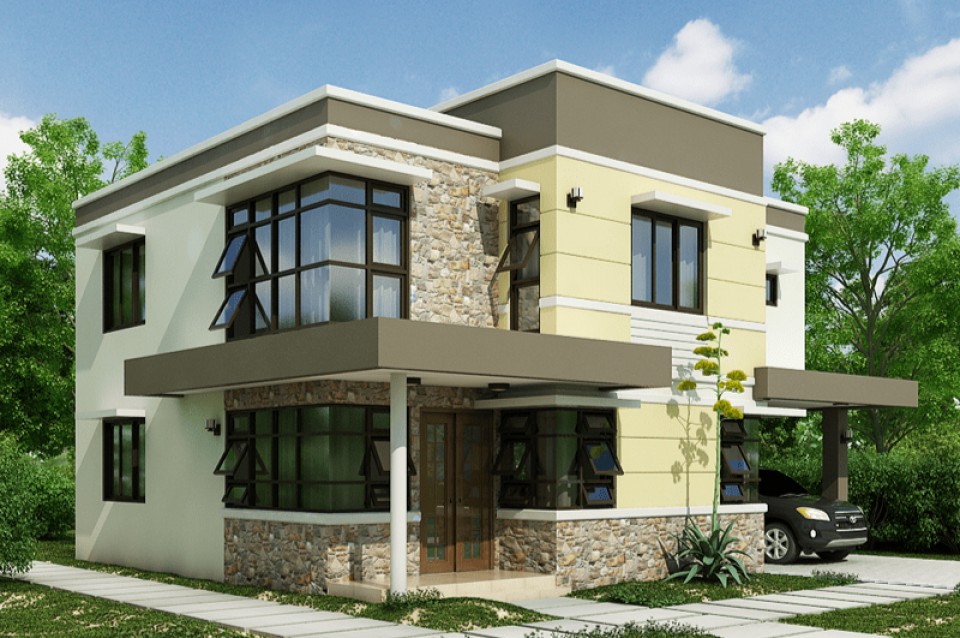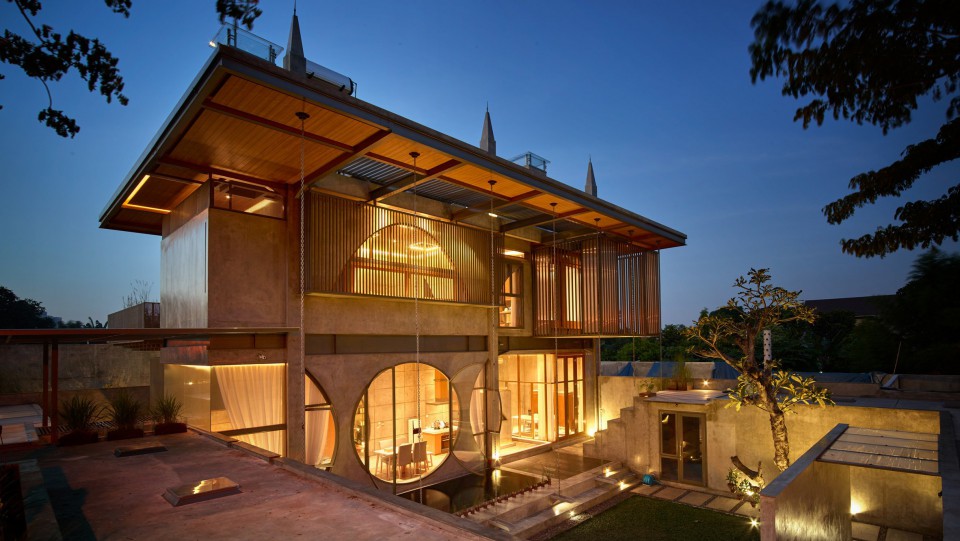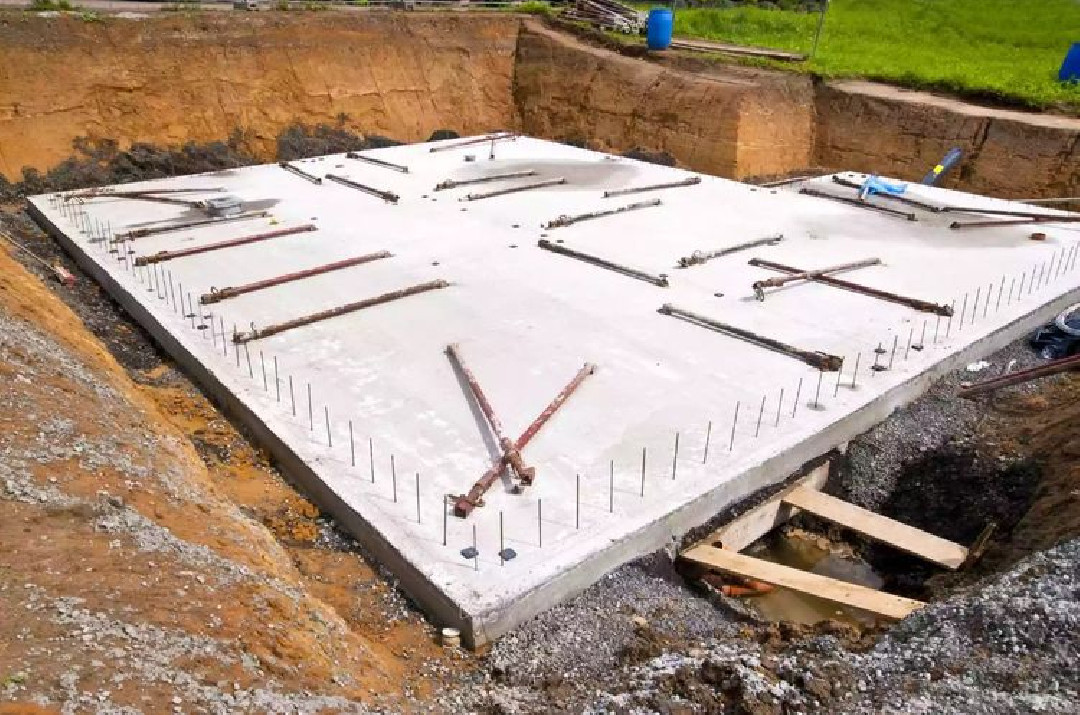Palaces in Indonesia That Still Exist Today
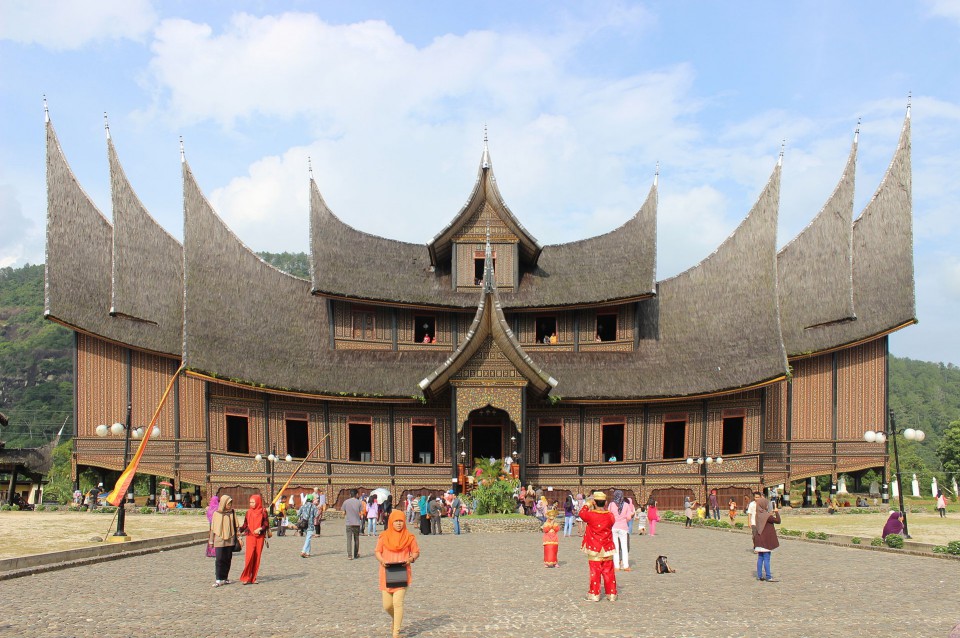
Here are some palaces owned by our beloved Indonesia, stretching from Sabang to Merauke:
1. Merdeka Palace
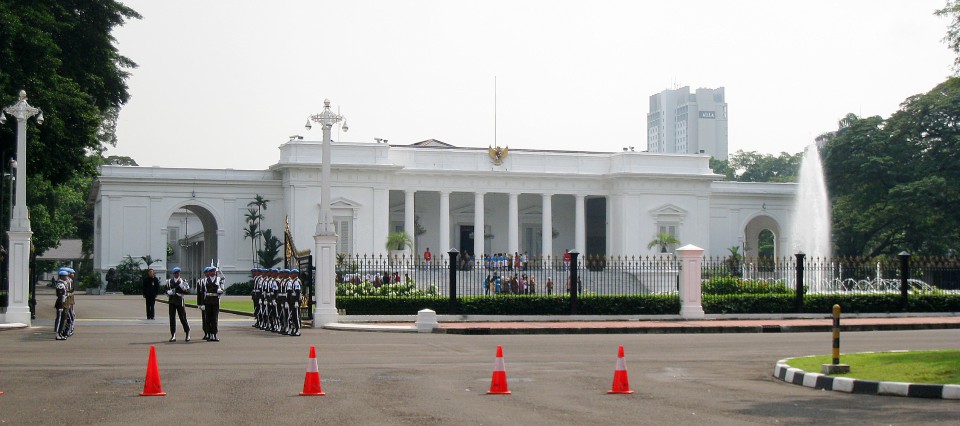
photo source : Gunkarta Gunawan Kartapranata
Merdeka Palace, also known as Istana Gambir in Indonesian and during the Dutch colonial period as Paleis te Koningsplein, is one of the six presidential palaces in Indonesia. Located on the northern side of Merdeka Square in Central Jakarta, Indonesia, it serves as the official residence of the President of the Republic of Indonesia.
This palace was originally the residence of the Governor-General of the Dutch East Indies during the colonial era. In 1949, it was renamed Merdeka Palace, which means "freedom" or "independence."
Merdeka Palace is part of the Presidential Palace Complex in Jakarta, spanning 6.8 hectares (17 acres), which also includes the State Palace, Wisma Negara (the national residence), the State Secretariat, and the Bina Graha Building. It serves as the center of executive authority in Indonesia.
2. Bogor Palace
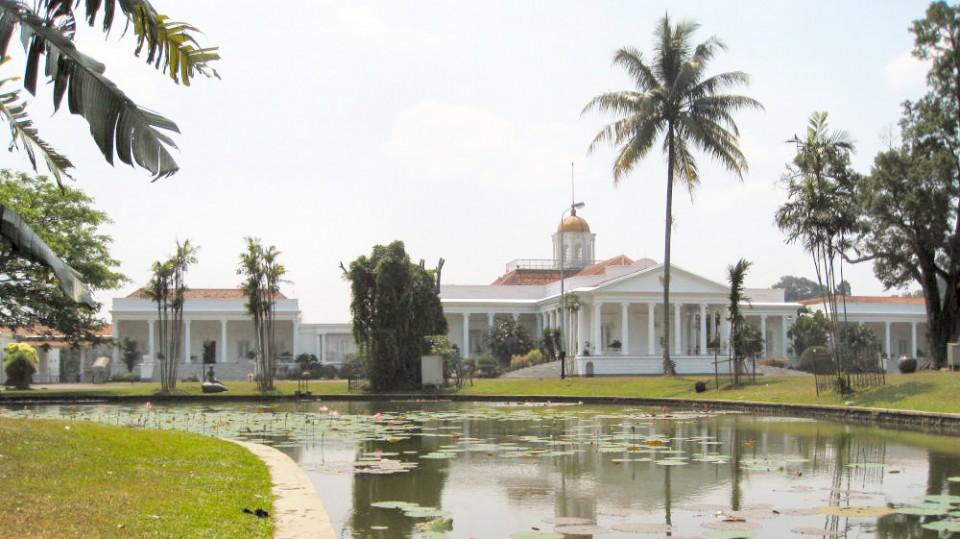
photo source : Michael J. Lowe
Bogor Palace (Het Paleis te Buitenzorg in Dutch) is one of the six presidential palaces in Indonesia, located in the city of Bogor, West Java. Known for its unique architecture and history, as well as its adjacent botanical garden, the Bogor Palace was opened to the public in 1968 for group tours (not individuals) with permission from the then-President of Indonesia, Suharto. The palace's grounds cover an area of 284,000 square meters (28.4 hectares).
During the colonial era, the palace was a favorite residence for Dutch East Indies Governors-General due to Bogor's more temperate climate. It was also favored by the late President Sukarno and served as the official presidential residence until his downfall in 1967. The palace remained largely unused until February 2015 when the new President, Joko Widodo, moved the presidential office from Merdeka Palace to Bogor Palace.
3. Maimun Palace
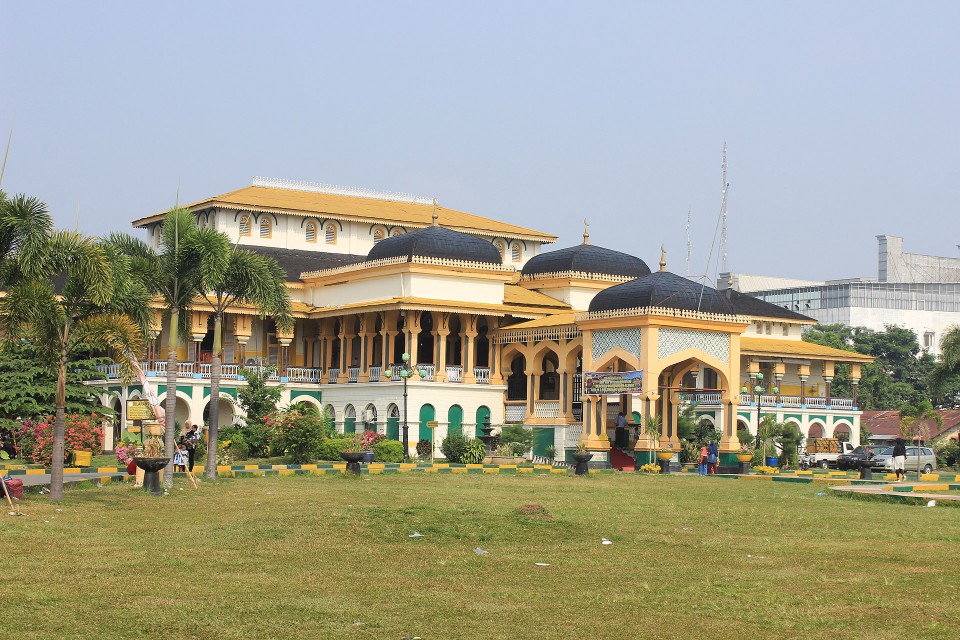
photo source : Mimihitam
Maimun Palace is a royal palace of the Sultanate of Deli and is quite famous in Medan, the capital of North Sumatra, Indonesia. Today, it functions as a museum.
Built by Sultan Ma'mun Al Rashid Perkasa Alamyah from 1887 to 1891, the palace was designed by Dutch architect Theodoor van Erp and covers an area of 2,772 square meters with a total of 30 rooms. The palace has become a popular tourist destination in the city, not only because of its historical heritage status but also due to its unique interior design, blending elements of Malay culture, Islamic and Indian architecture, with Spanish and Italian furniture and furnishings.
4. Pagaruyung Palace
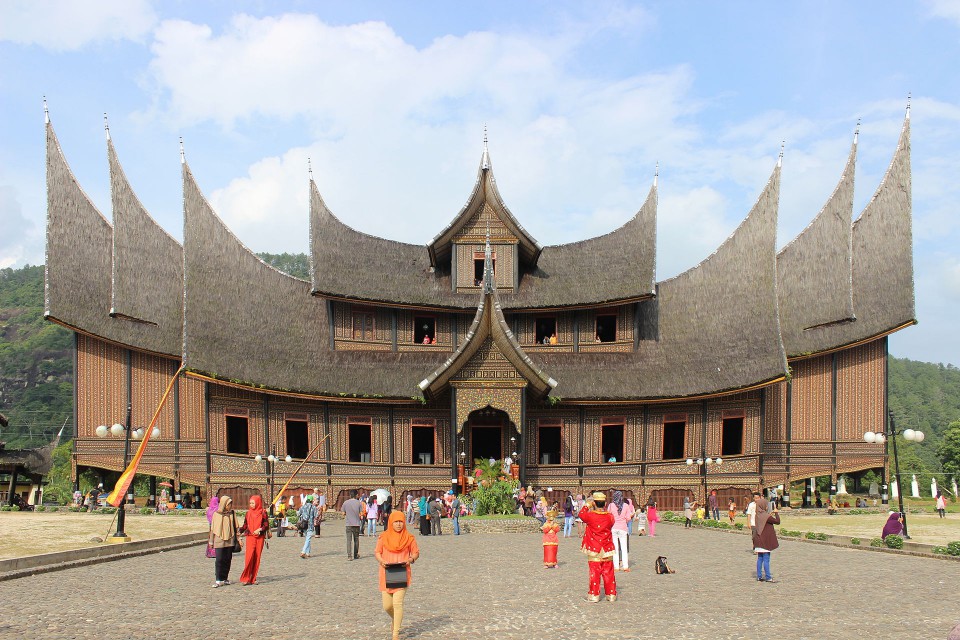
photo source : D.W. Fisher-Freberg
Pagaruyung Palace (Istano Basa Pagaruyuang in Minangkabau language) is a former palace of the Pagaruyung Kingdom located in the Tanjung Emas subdistrict near Batusangkar, Tanah Datar Regency, West Sumatra, Indonesia. It was constructed in the vernacular Minangkabau Rumah Gadang traditional style but with some atypical elements, including a three-story structure and larger dimensions compared to regular Rumah Gadang houses.
Since the Pagaruyung Kingdom was dissolved in 1833, no royal family resides in the palace today. However, it is still highly regarded among the Minangkabau people because descendants of the Minang nobility maintain their roots and connections to the former Pagaruyung royal house. The palace has been destroyed by fires multiple times, in 1804, 1966, and 2007, but has been rebuilt and now serves as a museum and a popular tourist attraction.
5. Sumenep Palace
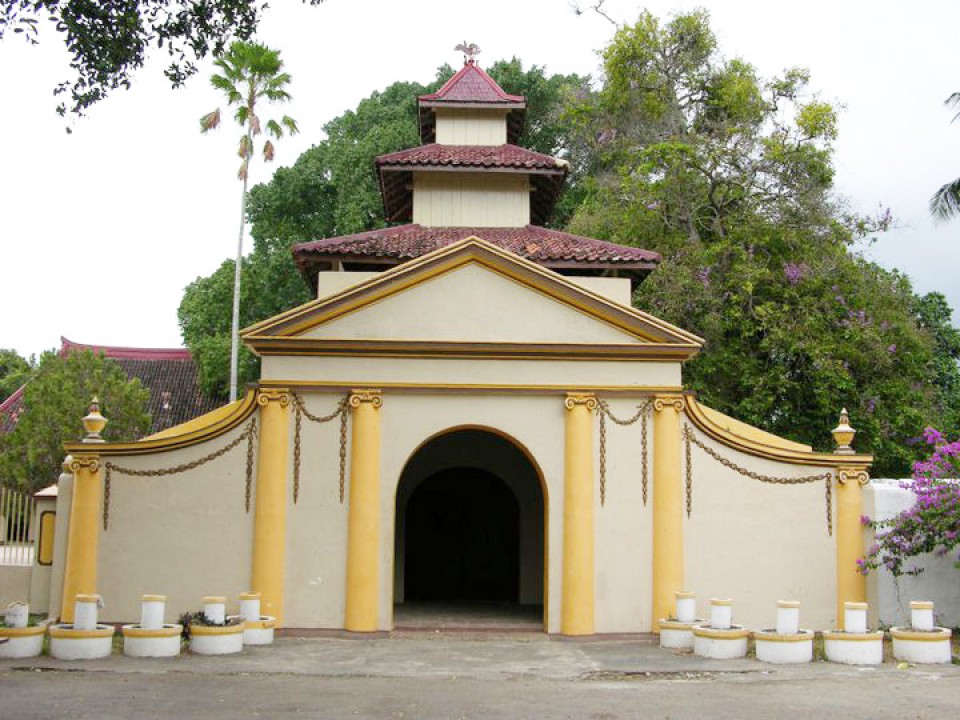
Photo source : wikipedia
Sumenep Palace is the official residence of the dukes/kings and also serves as the center of government administration. Sumenep itself was a small kingdom (equivalent to a Duchy) during that time, and before it fell under the rule of the Dutch East India Company (VOC), the Sumenep region paid tribute to larger kingdoms (Singhasari, Majapahit, and the Mataram Sultanate).
The remaining and intact part of Sumenep Palace was built by Gusti Raden Ayu Tirtonegoro R. Rasmana and Kanjeng Tumenggung Ario Tirtonegoro (Bindara Saod) along with their descendants, Panembahan Somala Asirudin Pakunataningrat and Sri Sultan Abdurrahman Pakunataningrat I (Raden Ario Notonegoro). Other palaces of the dukes/kings, such as the Karaton Pangeran Siding Puri in Parsanga, Karaton Tumenggung Kanduruan, Karaton Pangeran Lor, and Pangeran Wetan in Karangduak, only have remnants like gateways and foundation remnants.
6. Tampaksiring Palace
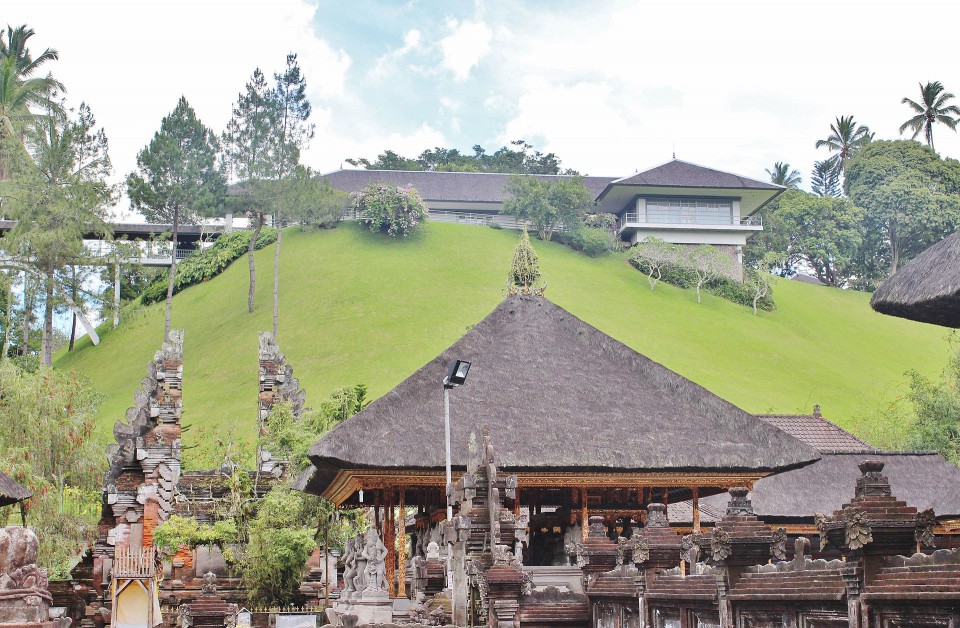
photo source : Michelle Maria
Tampaksiring Palace is one of the six presidential palaces of Indonesia, located in Tampaksiring, Gianyar Regency, Bali. Built between 1957 and 1963, it is unique among Indonesia's presidential palaces as it was constructed after Indonesia's independence and was designed not in the colonial Dutch East Indies style but rather in modernism with Balinese architectural elements.
The palace complex spans 19 hectares and includes various buildings. The main palace stands on higher ground, facing the Tampaksiring Tirta Empul Temple and Mount Agung.
7. Gedung Agung Palace

photo source : Michael J. Lowe
Gedung Agung Palace was initially constructed in 1824 on land owned by the 18th Dutch Resident of Yogyakarta, Anthonie Hendriks Smissaert. The first building was designed by architect A. Payen, following the typical tropical architecture of the Dutch East Indies. Construction was delayed due to the ongoing Java War, led by Prince Diponegoro, and was completed in 1832.
The palace was severely damaged and demolished by an earthquake on June 10, 1867. It was rebuilt in 1869. Yogyakarta's status changed from Resident to a province on December 19, 1927, leading to the palace being repurposed as the governor's office.
During the struggle for independence, Jakarta was occupied by Allied forces, and the government was moved to Yogyakarta on January 6, 1946. The palace served as President Sukarno's residence from 1946 to 1949 until the government was moved back to Jakarta on December 28, 1949.
After Soeharto became the second President of Indonesia, the palace was used for an evening parade on August 17th each year to commemorate Indonesia's independence. In 1991, the palace was used to celebrate every second of the declaration of independence.
8. Cipanas Palace

photo source : M.M.Minderhoud
Cipanas Palace is one of the six presidential palaces in Indonesia. It is located in Cipanas, West Java, near the road connecting Jakarta and Bandung via Puncak. Situated approximately 103 kilometers (64 miles) from Jakarta and about 20 kilometers (12 miles) from Cianjur city, Cipanas Palace is in the village of Cipanas in Cianjur Regency, at the foot of Mount Gede, at an elevation of 1,100 meters (
3,600 feet) above sea level. The palace complex covers about 26 hectares (64 acres) of land, with a building area of approximately 7,760 square meters (83,500 square feet).
9. State Palace
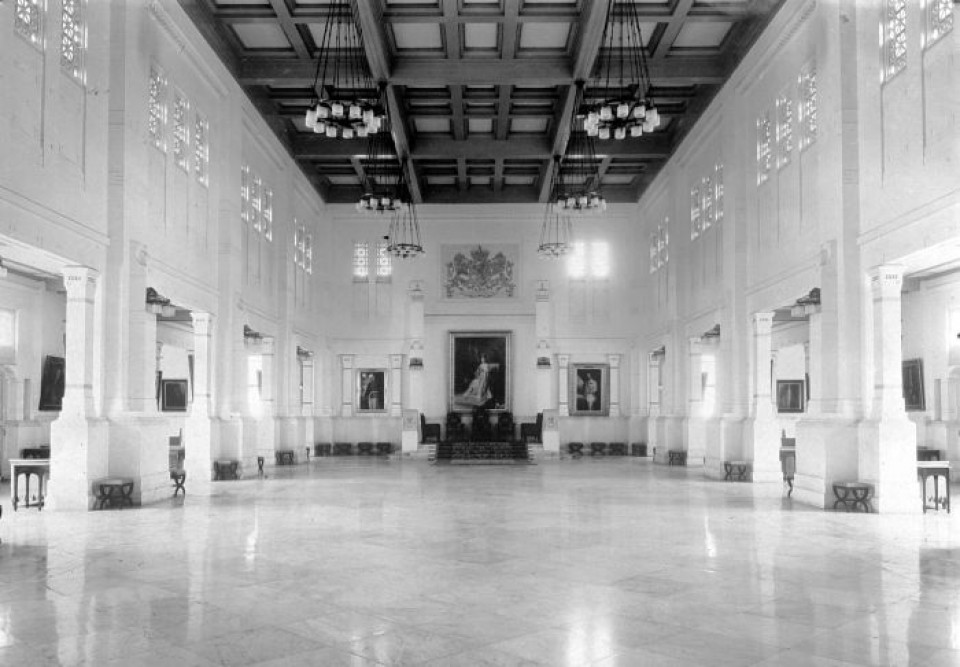
photo source : wikipedia
State Palace (Paleis te Rijswijk in Dutch) is one of the six presidential palaces in Indonesia. Located on Jalan Veteran in Central Jakarta, it is situated south of Merdeka Palace. It is part of the Presidential Palace Complex, which has a total area of 68,000 square meters (approximately 17 acres) and includes three other buildings: Bina Graha, which was formerly used as the President's Office, Wisma Negara to the west, used as the state residence, and the office of the Indonesian State Secretariat. State Palace faces north toward the street, while Merdeka Palace faces Merdeka Square and the National Monument (Monas).


